Etherium, developed by Tindalos Interactive and published by Focus Home Interactive, was released on March 25, 2015. The game is a straight-forward RTS that offers 3 factions, multiplayer and single player game modes, along with a typical AI skirmish mode. It focuses more on map control, and it reduces base-building to extension building while keeping a low micromanagement of units.
Overall, the game tries to dance in the middle of several RTS conventions; it is neither a sprawling macro heavy economic focused base-building RTS nor a small squad micro heavy tactical game where the player will worry about flanking. It does have some elements from each, but not enough to mistaken it as trying to be either. The game tries to mix-up the mixed formula by adding secondary factions and weather systems, which do change things up a bit but not overly significantly.
The game may appeal to those new to the genre that are overwhelmed by either archetypical RTS styles as the game has a straight-forward expansion system and units that do not need to be heavily micromanaged. The game can be easily mastered without having things like high APM (actions per minute) or detailed situational awareness. Though a lot of real-time tactics games tend to also not need high APM, in the case of Etherium the player doesn’t need to worry about things like flanking, suppression cones, and artillery kill zones (though there is suppression in the game and one commander ability that mimics artillery kill zones).
A quick note, this is a full RTS title, similar to titles like Company of Heroes, StarCraft, and Planetary Annihilation where the player can pause the game but they can’t issue orders during a pause. Another note, you can’t save during skirmish battles. Fortunately, they tend to never be longer than 25 minutes, but this may still be an issue for some players.
Presentation
Visually the game is a mixed bag. The overall visuals are not bad and sometimes even quite nice. The planet’s environments are detailed enough though each map will be a little monochromatic with variation being between different maps only. The models vary from decent looking to somewhat poor in contrast to other models. What hurts the game’s visuals are the low animation counts and the range the game is seen at. To effectively play the game the camera will usually be zoomed out completely so that even the larger units seem small and indistinguishable, making the player rely more on the unit icons.
It should be noted that even when zoomed in many unit models are still small and not very discernible, and even if zoomed in enough, the game’s visual weakness will be apparent quickly. The models have little animation. Also, weapon fire effects are very underwhelming, looking like small pellets and cat scratches leaving very little visual impact of the carnage. This doesn’t mean the game is bad, many good RTS are visually simple or played at “icon level”, but Etherium shouldn’t be mistaken as one that is a visual orchestra.
The music is nice but limited; the same track seems to play in every skirmish map. The conquest mode map has its own track but that too is just one track, with a few unique tracks here and there. The music will get repetitive quickly. Sound effects are also straight-forward; there are a few distinct ones but overall the player will quickly start ignoring them and only use them to know something is happening (but rarely know exactly what is happening based on them alone).
The Basics
The game offers 3 game modes: multiplayer (both ranked and unranked), skirmish, and conquest mode, which is a skirmish meta-game, where the player wages war on a “strategic map” that leads to skirmish map battles against the AI faction with persistent gains. Conquest mode will have its own section later in the review. With skirmish mode, both single player and multiplayer, the player gets a choice between three factions, the AI difficulty level if present (3 difficulty settings), and for custom skirmishes the choice to disable weather and secondary factions. Team skirmish is limited to 2v2 only.
The game’s three factions are distinct and unique though they do share strong similarities with each other. Each faction will have the run of the mill infantry and vehicle, an anti-vehicle infantry, and an anti-personnel infantry among many others. However, each faction has distinct units like a light vehicle that is specialised against infantry or a fast infantry that speeds up command point generation. In addition, each faction gets a set of passive abilities and half of their command abilities are specific to them. Combine this with their unique base extension and this makes each of the three factions have distinct play styles.
Each planet has 3 maps for 1v1 and 1 map for 2v2. These maps are varied and give interesting options as there may be different routes to the enemy’s base, while other maps will have only one land path to the enemy with the rest of the map being equally divided into relatively safe areas to expand into. The down side is the maps are actually quite small, and though the nature of the game supports this model well, it will still become apparent to most players that the maps offer very limited surface area to fight over.
The game UI is centralised; the minimap offers buttons for some global abilities like airlift; you also have a status bar that shows your tech level and special building numbers, a section to view the reputation with secondary factions, and the build interface.
The game’s build interface is awkward at first, effective once you get used to it and frustrating again once you get further in. Instead of being building or target specific, it is function specific. You select what you want, and then select where to build it. This works well with the unit production system as the player can deploy any unit they have unlocked via their tech level at any deployment zones, as only the tech level determines what you can build as there are no building chains that limit what you can deploy.
Overall, the building system lends itself well to the game’s overall mechanics but there is a minor hic-up. It feels like it’s all too easy to have something from the menu selected, so when the player goes to click on something on the map the cursor doesn’t work till it’s cleared of whatever was hanging it up (usually by right mouse clicking anywhere on the map). It feels like the UI building system could have been refined a little better to prevent this all too common cursor “occupied” issue.
Economy
The game’s economy is handled by map control, expansion building, and extension slotting. The player needs to capture territory by building an outpost or colony (which one you build is predetermined by the map point), naturally requiring you to destroy the enemy’s first, if one is present. Once the player has the node, they can build 1 or 3 extensions on it depending if it is an outpost or a colony. Also, if an Etherium Orb is present, the player can also build an extractor on it to increase income. This system forces the player to battle for the entire map, making turtling into a corner a failed strategy as you either have to expand or at the very least deny the opponent’s expansion.
Instead of base building the game has you build extensions in the limited slots that you get from your expansions (with a small allowance on your main base as well). These extensions are critical as they influence your ability to wage war. This includes spaceports that let you summon squads closer to the front instead of your main base, Tech Centers that let you build higher tier units, ComSat that increases your command ability pool and regeneration, and Logistics Centers that increases your unit cap. Logistics operates on a “division” cap. Each unit , or squad of units for infantry and low tier vehicles count as one “division”. Other extensions include faction specific ones and orbital cannons that act as an alternative way to defeat the opponent.
Instead of building defensive structures the player can build turrets in their control zones. These are tough little weapons that are specialised to one type of unit. They are usually good at holding off harassers and maybe even dealing with a small attack group, but can be overwhelmed easily by a large attack group. Following the same philosophy as extension building, this is a quick and easy system for defensive structures, but it will not satisfy those that like to fill the map with obstacles.
Overall, the system does a good job to encourage the player to push out, expand, and build more extensions while trying to limit the opponent’s expansion. This combined with maps that create paths of limited movement will encourage skirmishes all over the map with areas that are sometimes hard to reinforce quickly. The limited base building will be disappointing to those who enjoy that sort of thing, but it helps in freeing up the player to focus on the fighting. On the other hand, and because of the lack of special unit abilities, the limited micro of units means the player can easily control their army. This sort of lack of intensive focus in either field makes the game easier for many to pick up but may result in the game feeling like it lacks something if you are a veteran of the genre.
Weather and Secondary Factions
Each world (from a total of 6) offers a unique weather system. These range from sandstorms that immobilise units and kill line of sight, to electromagnetic storms that lock out all command abilities. Some of these can be very damaging. Volcanic eruptions will destroy any unit that dares to cross their paths, which are pre-marked as cracks on the ground, while a tornado can damage objects on its path. These weather effects are not too overbearing and can be easily managed, which is good because when they do get in the way they can really tip the scales. A tornado hitting the area you are retreating to can kill the army that barely survived an enemy encounter, while lava could cut off your path of retreat. An untimely sandstorm might interfere with your attack or an electromagnetic storm may block you from using the command abilities you were just about to use.
Secondary factions require the player to convert a certain building to a recruitment building to sway a secondary faction to their cause. The type of building you need to convert is fixed to each specific faction and the more useful the faction the more limiting the sacrifice is. Giving up a few ComSat or Tech Centers can be risky but their corresponding factions are quite useful. Though the number of secondary factions present is set per map (1 or 2), which faction is present is random.
Secondary factions have a similar feast or famine effect on gameplay. Many times you can just ignore them, however, letting the AI gain specific ones might be dangerous in certain situations. Guardians or Parasites that come after the player without being prepared can rip through your units or bases. Likewise they can be used by the player to beat a stalemate with the AI, because the AI usually can’t deal with 3 Guardians floating onto its base. This may make some maps become a race to the one really good secondary faction, especially in the Conquest Mode where limited tech unlocks play a significant role.
Overall, these weather and secondary factions’ mechanics are interesting and do help make Etherium distinct, but not enough to sway the overall quality of the game. The mechanics randomness does add diversity, but sometimes also frustration.
Battle Mechanics
Discussed earlier, the game has a logistics cap that you upgrade via Logistic Centers. It should be noted the unit cap is very small, 3-4 units at the start and the player goes up to about 18 units max. Now, more often than not you should be able to win the map with a much lower unit count (usually around 9 or so). This makes the game have very small pockets of quick conflicts. This approach is not uncommon for RTS that focus more heavily on placement, facing, and tactics. However, Etherium is more traditional with its unit’s abilities, so positioning is not as critical, making it feel rather light in this department.
Traditional is an overstatement really as there are no casters (units that have special abilities that you have to click) and none of the units have activate-able abilities. Not a single one. All the unique abilities are passive, and they act more to define the unit’s class. Certain faction units do get more special passive abilities like earning extra command points, or having stealth. Certain abilities to consider heavily is what bonus damage does it get, does the unit have suppression (will slow down an infantry unit if it attacks it), and what armour class does it have. This plays heavily in the rock-paper-scissors nature of combat.
The game does mix up the rock-paper-scissors formula by having infantry and vehicles that fill several counter roles. Example, infantry has both anti-vehicle and anti-personnel units. This creates a mixture of soft counters and hard counters. You also have special units like snipers and artillery that benefit from range and can act as damage support. This does reward some unit micromanagement as you can maximise enemy losses and minimise player losses by making sure the right unit is shooting at the correct target, and making it hard for their counters to hit what they are best for.
The player also gains access to a set of commander abilities that cost command points and are generated over time. However, you do not have a special commander unit, this is just a set of faction based abilities you have access to. These can vary in usefulness and play an important role in fully exploiting your faction. One good example is the Consortium, which can very easily boost its economy, and quickly build its first expansions and extensions. This will put the Consortium player ahead of its opponents early and may even be able to maintain an economic advantage with less of the map under their control. With the lack of unit based micro, these abilities become very important as they are the only real means for the player to “intelligently” influence the battle outside of build orders and map control.
A major failing of the game is that there are no “special form” attacks. It seems every attack in the game targets one foe, except for the orbital strike from the commander abilities. Even artillery units will pelt onto one unit. No cones, no lines, no streaks, and no AoE (area of effect) attacks that originate from the units. Even the War Colossi will feel underwhelming as it peppers onto one foe, when combined with the lack luster visuals of weapon fire this makes the combat of the game look a little bland.
Balance
There is some oddity in game balance. One such oddity is that Anti-Air units can attack ground units. Though this is not a convention that has to be obeyed, it felt strange as they also seem to have greater range than other units. Though the damage to ground units is minimal they can still be used to pelt and harass a target from a distance, serving as a poor man’s artillery. It’s stranger still when the player sees the AI spam them as a strategy, and though they are easily countered, the fact that they can actually slow you down makes you wonder if this “can attack ground targets too” feature was well thought out.
Without playing multiplayer (explained later) it was difficult to judge faction balance. Versus the AI the factions did seem balanced but the AI’s ability to play each faction was not (the AI is significantly better as the Consortium). Generally, each faction has their own strengths and weaknesses, and in turn means what worked against one faction won’t on the other. Also, if you change your played faction, your strategy would need to change, even if you fight the same enemy. A faction may feel overpowered until you realise you were playing right into its strengths and with a change in strategy it is revealed that that was far from the truth.
Another weak spot is the orbital cannon. Basically each battle has a fleet strength that you can leech by building these, once depleted the enemy is forced to retreat and you win. The problem is that the ticking is very slow (you need 5 to have any decent speed), and since you need to build other extensions you will have enough map control that it will be faster to just roll over the AI. It will feel like these extensions slots could have been given to something else to make the battle finish faster. They can be used to provoke a conflict out of a turtling war, but that is about it.
Conquest Mode
The game doesn’t have a single player campaign. Since playing random skirmish maps will usually not be enough to meet the single player requirement, the game offers a Conquest Mode. This is a meta-skirmish mode with a board game like strategic layer. The player selects their faction and starts off with one planet under their control and uses their fleet to attack the AI fleets or to seize territories on planets. The goal is to accumulate 12 or more points in 15 turns or less. On turn 15 the player with the highest score wins. The game also features a tutorial for the conquest mode.
Each turn the player gets random action cards which they can use to gain an effect like prevent a planet from being attacked, prevent the enemy from repairing its fleets, or any other special effect that can tip the balance. Each territory controlled gives a basic bonus, and as the player holds on to these territories they build up and give even more bonuses. These bonuses include extra victory points, extra starting Etherium for skirmish battles, or technology points. The player also receives a set of random objectives that can give bonus victory points. These range from controlling all territories on a planet, controlling one territory per planet, or researching a certain number of techs.
Technology is handled differently from regular skirmishes. The player does not have access to all their units. You need to use your technology points in the strategic layer to unlock tech levels and their corresponding units. This makes certain counters not available right away.
The game also lets the player use their actions to spy on the enemy. This can be used to see what their special objectives are or what units they have unlocked. The tech spying is a snap shot only, and will require future spying actions to see what future progresses they’ve made. The player can sometimes notice a weakness in their roster and exploit it quickly with their own selections.
In this layer, the secondary factions are a little more persistent. Though you still need to rally them on the map afterwards, if the player has done it enough times in the game they will have the ability to build them as a regular unit. Sometimes this rallied status is a victory condition as well.
When the player encounters an occupied territory, or the AI attacks one of the player’s territories, the game switches to a skirmish map. The attacker gets to choose the map they want and several factors may play in to give different bonuses like owning other territories on the same planet or having an Etherium boost for the battle. Losing on an attack will damage the fleet as well.
Though this mode may not be as immersive as a proper campaign, it does give it a little more replay value, in theory. Overall, the experience is enjoyable for the most part and gives a more concrete direction than just playing skirmish maps randomly. Sometimes the player will need to make tough choices and face tough consequences. Lacking a certain unit can be devastating as the player will be able to exploit this as well. This mode should not be mistaken for some deep strategic layer however; it is more like a board game but a decently made one.
The Conquest Mode also offers an Iron Man mode for players who wish an extra layer of challenge.
AI and Replayability
The AI is a mixed bag. It feels naive and odd at times, but can be quite challenging and decent at others. The Conquest Mode AI is mostly random except that it will try to meet its special objectives and will naturally attack the player more often if they’re in the lead. It will sometimes do the oddest things which can only be described as random. One random event that can occur is that both AI’s choose to attack you on the second turn (maybe even the first), resulting in up to 6 skirmish battles (if not more) in a row with practically no unit unlocks. If the player survives this, the AI will fall behind painfully.
The skirmish AI is much better but it still has its goofy moments. It has trouble handling extensions, as it doesn’t seem to sell those that are not helpful and re-specialise its bases. This gives an advantage to the player. The AI will sometimes drive a large army into a lava stream because it started its push before the eruption, but when the eruption starts it will not cancel the move. Also, the AI seems to get locked into certain build orders, which could include only building Anti-Air units.
The AI makes up for this by actually being pretty good at controlling its unit. It will sometimes change its direction of attack, and in the case of the hardest setting even change around its unit composition, if it can. The AI will use forced march to retreat units before you can kill them, never fail to avoid your orbital bombardments, while being uncannily good at using its orbital bombardment when you are not looking (don’t worry, it does use it when you are observing the fight as well). The computer will do early game harasses, massed attacks, pushes, and sometimes race to that one secondary faction you absolutely don’t want it to obtain and you’ll not be able to stop it.
The overall experience is that starting at Normal the AI will start challenging the player and on Easy the AI will be a good training wheel for new players. This said it was not hard to get suspicious that even the Normal AI gains an economy bonus, and a pretty large one at that. Without a replay feature it is hard to be certain, but the AI was able to achieve production levels that made no sense, even for the Consortium. Though such bonuses are not uncommon in games, it was strange to see such an obvious one at the Normal difficulty setting. Twice as strange as the AI logic is improved at each setting, as one would think the logic unlocks come first and then the economy bonuses start getting added. This probably explains the AI’s greater proficiency while playing the Consortium, since the faction is better at exploiting a stronger economy.
The game offers decent replayability. Conquest Mode’s more sandbox nature is nice, and the AI’s competence (at least at pushing on the player and unnervingly precise micro-play) will offer a decent challenge. Ironman mode and hard-mode could give many players a real challenge. On the other hand though it doesn’t take long to learn the counters and how to execute them, or learn the AI’s typical expansion path on each map, which then the player can use to do an early push to contain it. Once the player figures it all out, the game will start getting a little repetitive.
Stability and Multiplayer
Overall, the game is relatively stable. There was a crash on victory, which has been mostly addressed (without a save feature in the skirmish map, this felt like an AI rage quit at times). In pre-patch the problem was constant for me, but now it is completely gone. Though there have been some who reported the odd crash still. Turning off Anti-Aliasing seems to help some. The game does occasionally lag (alt-tabbing clears it up) and certain maps take much longer to load than others. Most of these later issues are mostly minor.
Multiplayer is sadly none-existent. There doesn’t seem to be enough people online to have matches. Though this does not affect the quality of the game, it is important to note for those who were planning to play the game for multiplayer matches. I was literally unable to get a single multiplayer match.
Final Verdict
Strangely enough, I liked Etherium. However, this doesn’t forgo its shortcomings. The game tries to take the best elements of every type of RTS out there but reduces them to a more simple fashion, so that they can all coexist. Anti-infantry units have suppression but it’s an attack attribute instead of a cone of fire. There’s armour versus anti-armour but it is just yet another simple attack attribute instead of some low rate-of-fire hard-hitting impact. Artillery is just a long range attack instead of a slow but deadly AoE. Orbital Cannons act like some sort of Victory Point system, but are just a supplement to a game where it is just easier to destroy the opponent’s base.
The good news is that the game has several interesting features that make up for a decent mix, but it leaves one feeling that no aspect is fleshed out enough. More could have been done with the extension systems, maybe have more than just turrets, perhaps the units could have more unique passive abilities, perhaps having more command ability choices. This feeling comes from the fact that all these feature seem subdued and none really stands out on its own.
This is further not helped with the games’ visuals which are too simple. Low animation counts and uninspired weapon fire visuals quickly make the player merely focus on the icons and what the needed tactics are for victory. The graphics are not bad per se as the game does have some nice visuals here and there, but it all comes together too roughly around the edges. Also, the weather and secondary factions’ mechanics, though interesting, are not enough to make the game stand on them as its main selling point.
This makes Etherium difficult to recommend. The game may be a fun diversion for veterans of the RTS genre, as there are some good ideas on how to play Conquest Mode, but the game will lose its charm quickly. It can also be an interesting title for those who want to play around with a varied mix of genre concepts, but that will only make you go back to your favourite sub-genre faster. The game could also be a really good game for newer players in the genre as the player will be introduced to many basic concepts you find in most RTS, so to know what aspects they like and don’t like before moving to a more focused RTS of their choosing.
|
Space Sector score:
6.5/10
fair
|
|---|
| The Good: – Quick and easy to get into – Decent selection of maps and terrains – Unique factions which favour different playstyles – The AI is competent at basic RTS tactics |
| The Bad: – Animations and weapon visuals are subpar to the overall visuals of the game – Maps are surprisingly small once you get used to them – Weapons are too generic in effect and impact – The AI has moments that are quite embarrassing – Overall the game feels subpar in many fields |
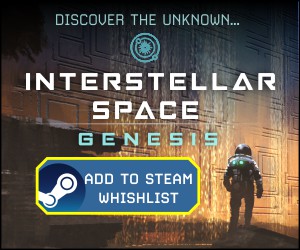
4 Comments
Related Articles:
- Planetary Annihilation Officially Released – First Impressions
- Ashes of the Singularity – Early Access First Impressions
- Servo – Early Access First Impressions
- Planetary Annihilation – Beta First Impressions
- Worlds of Magic – New Demo Battle Scenarios

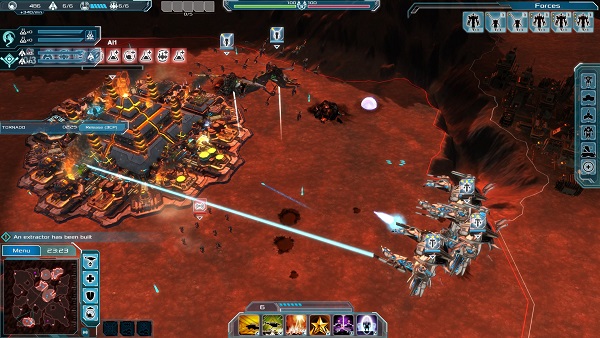
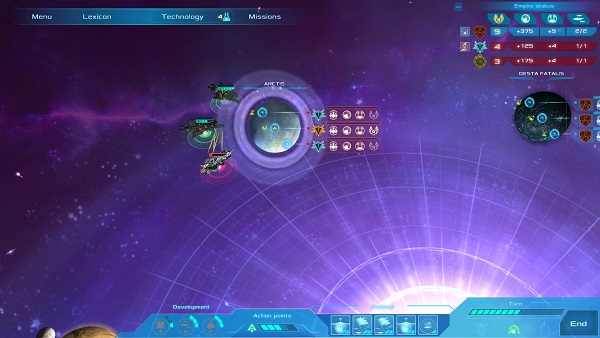
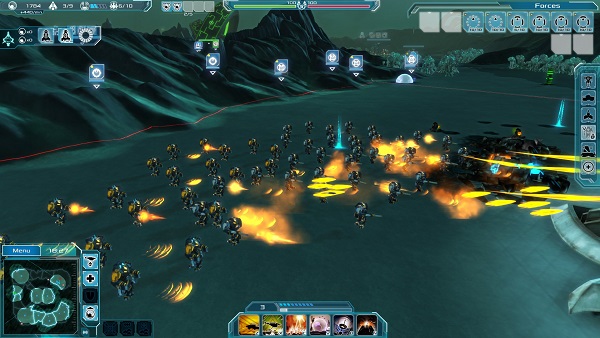
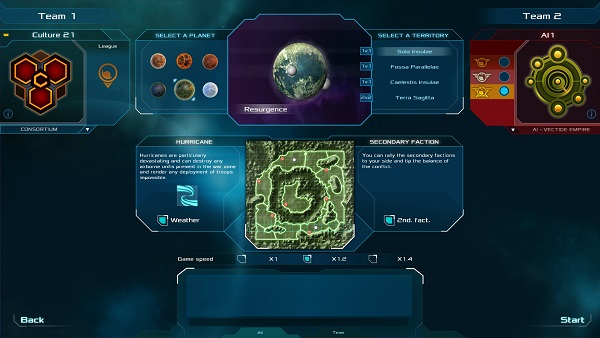
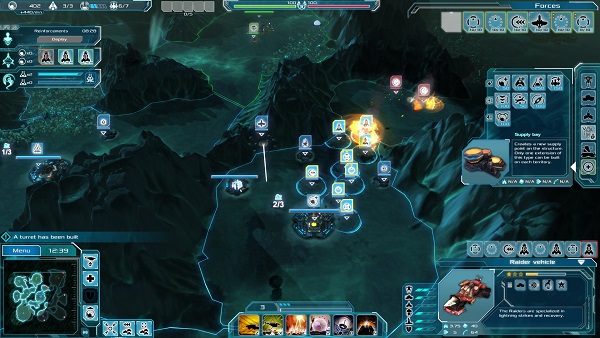
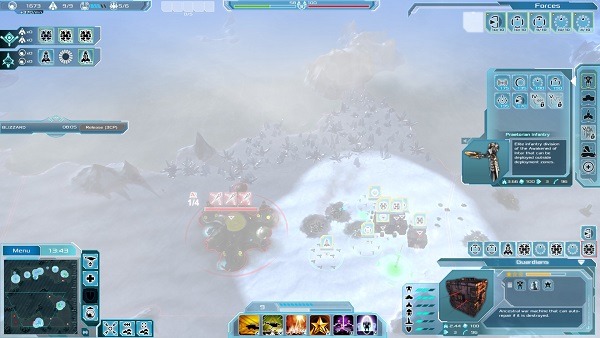
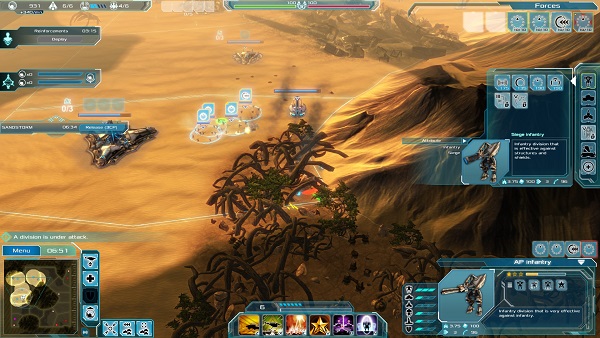
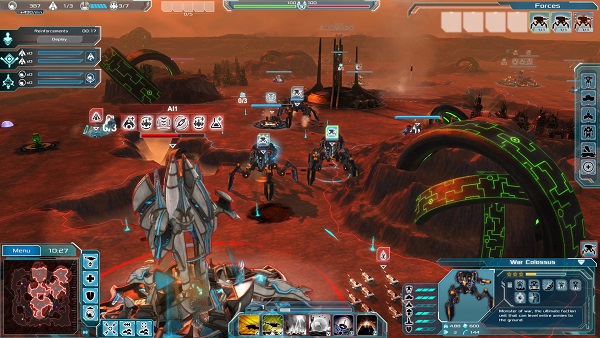
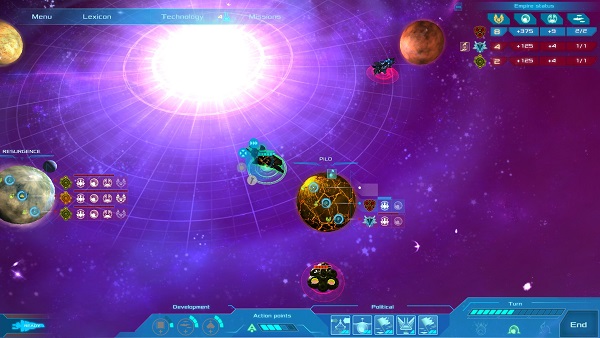
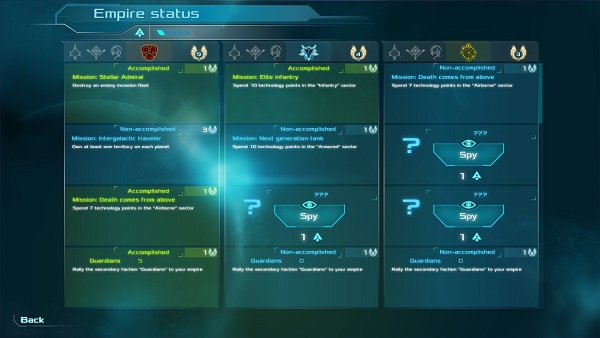
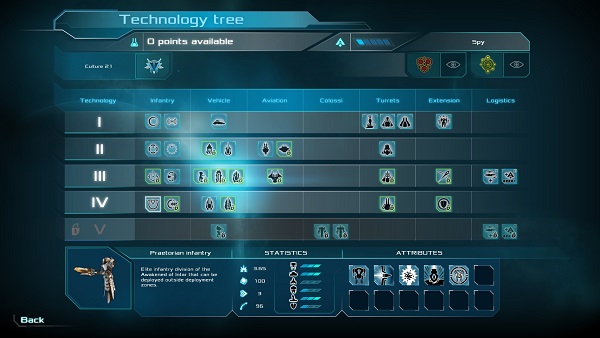
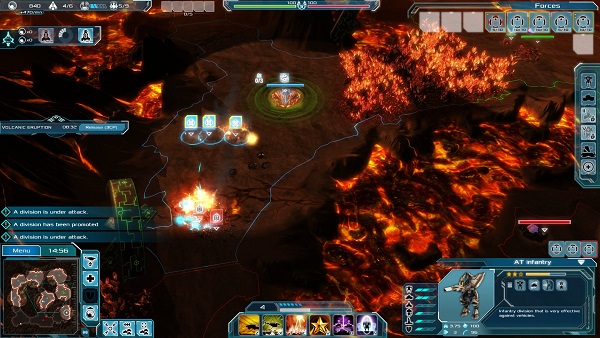
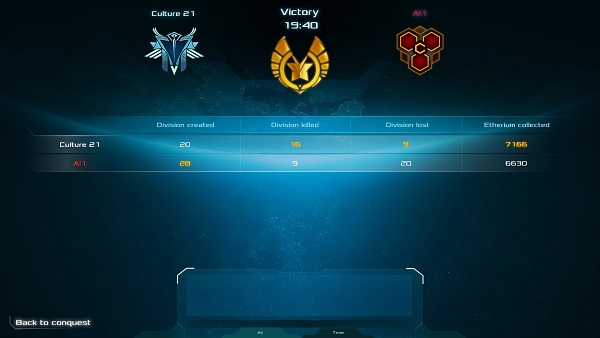
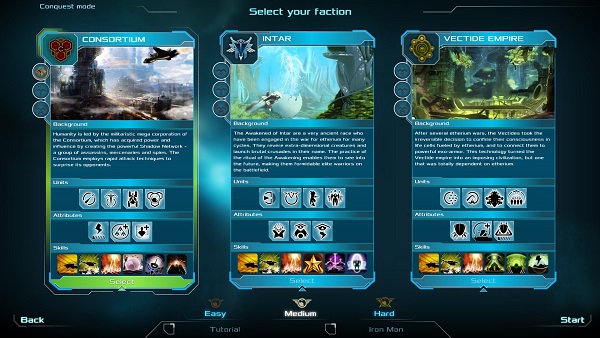

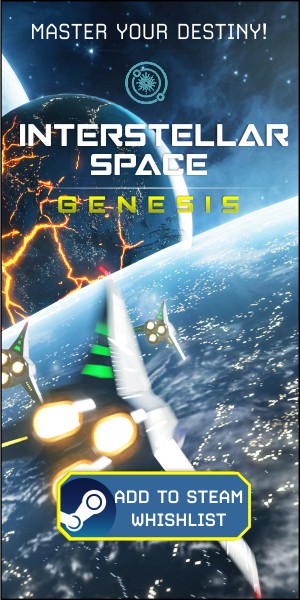
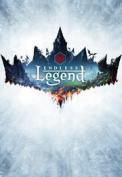

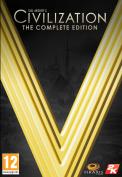


Seems like a generic RTS with some gimmicks that become boring already after some few games.
Managed to watch 40mins of video around youtube. I want those 40 mins back :(.
I’m just going to wait for them to patch Grey Goo until it’s an ‘A’ title.
Yes, I’m fairly patient but I’m hoping they’ll get there in a year or so.
Another Command and Conquer clone. Spare me: the original game was exciting enough for gamers almost two decades ago, which in turn was a rip-off of the even earlier Dune 2.
Weak sauce for 21st century gamers.
It looks like it suffers from a lot of implementation problems.
That and the races seem to be a bit uncreative. There’s a lot of polish and other balance issues that need to be addressed.
Finally the AI is looking like it’s not too good.
I like the idea of interesting RTS games, but the implementation of this one it looks like isn’t too great.